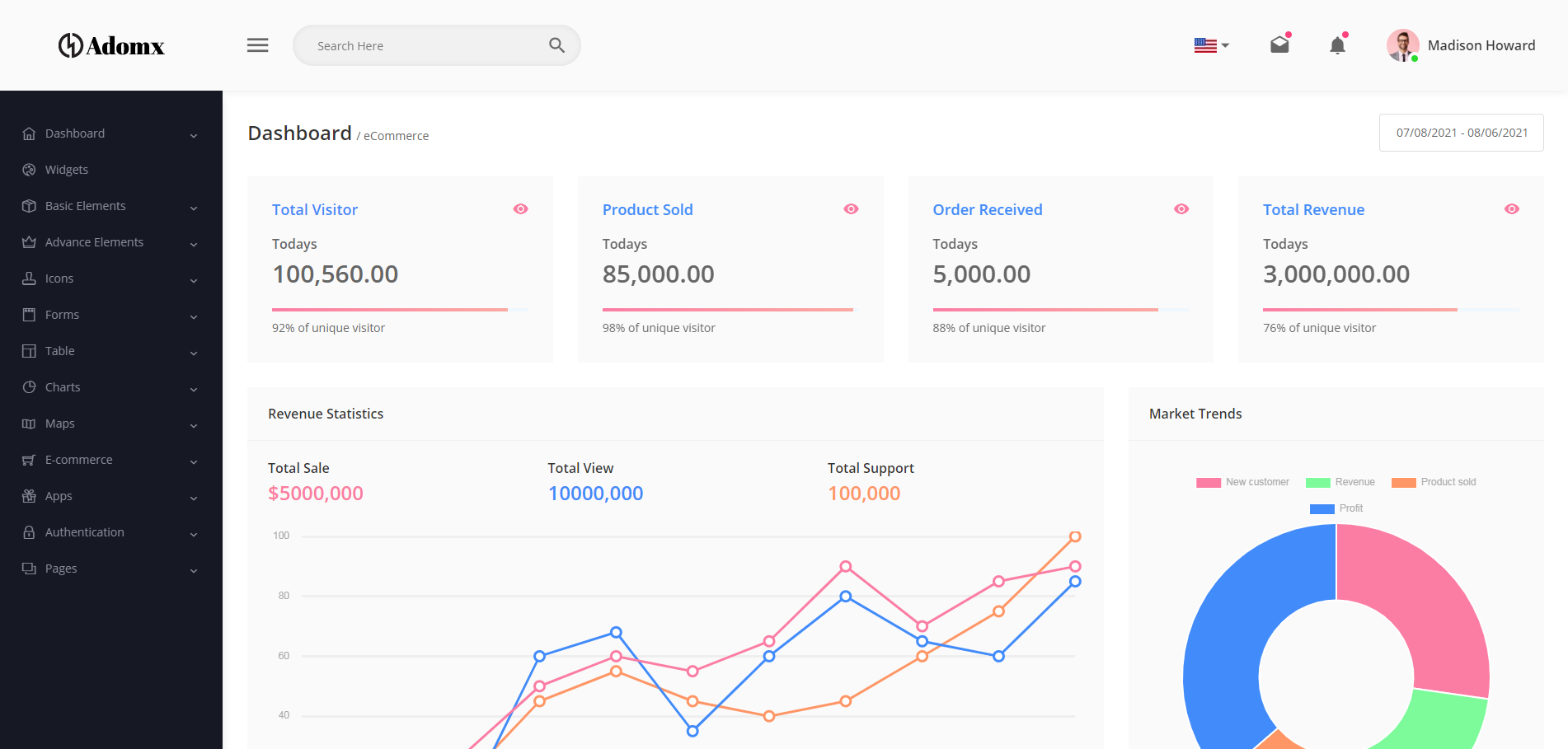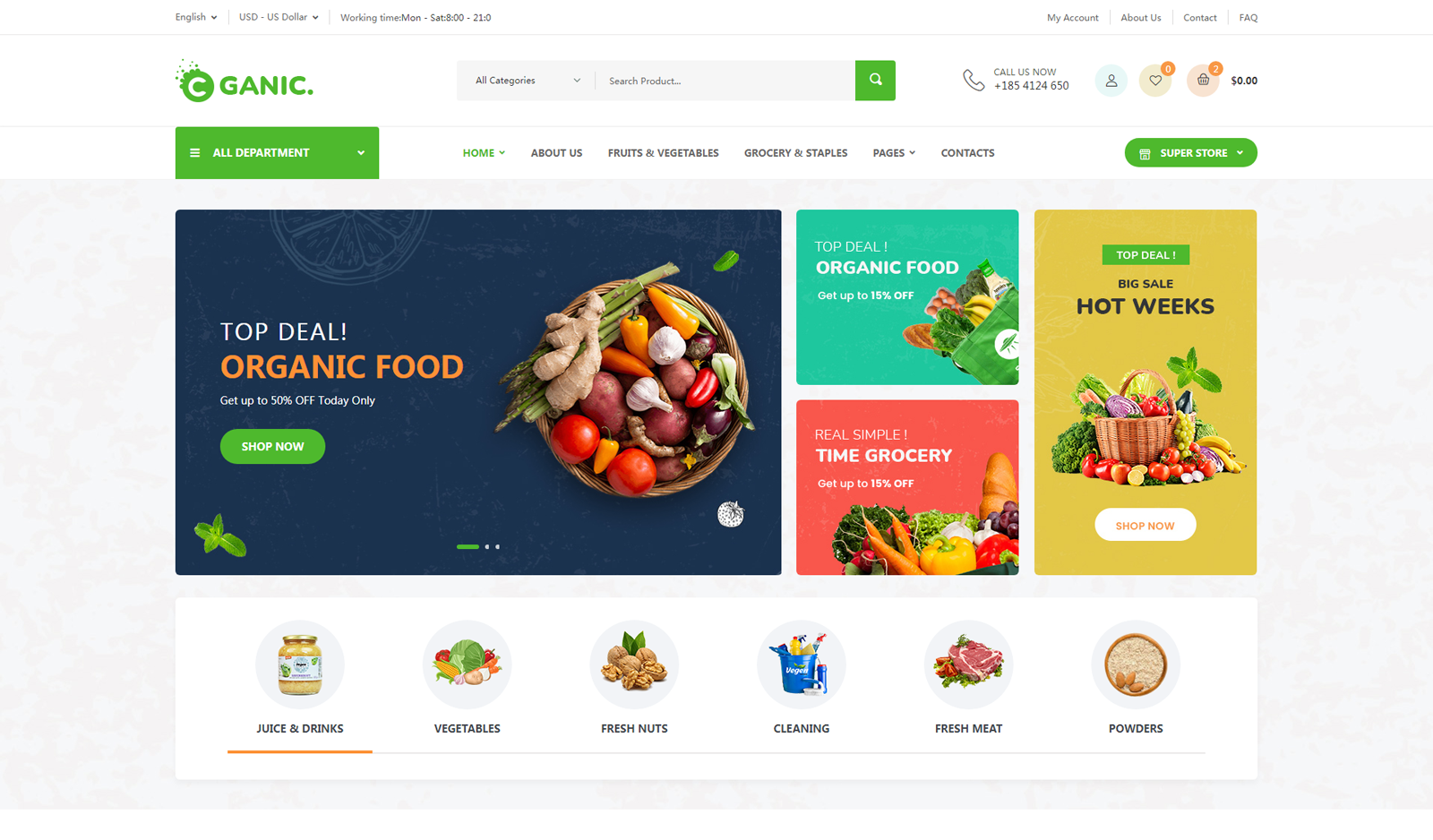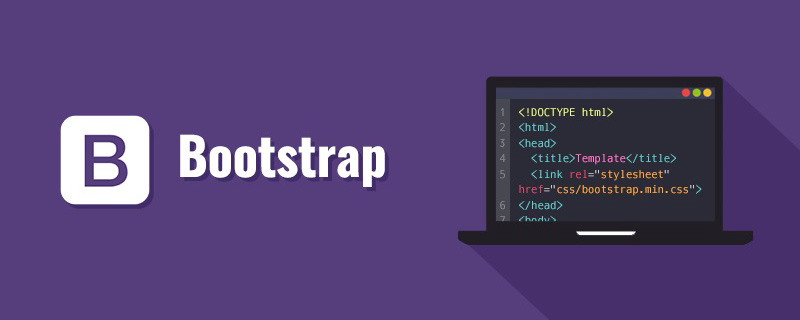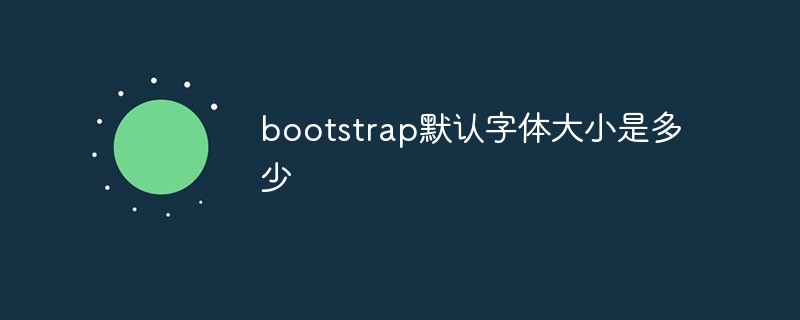In bootstrap, rasterization refers to dividing a row of the browser into 12 columns, and then allocating the column width occupied by the corresponding elements according to the needs of the developed page; that is, dividing according to the size of the device. Segments, each segment has a fixed width, and responsive layout is achieved through percentages and media queries.

The operating environment of this tutorial: Windows10 system, bootstrap5 version, DELL G3 computer
What is bootstrap rasterization
In bootstrap, the principle of rasterization is to segment according to the size of the device, with a fixed width for each segment, and to implement responsive layout through percentages and media queries; this allows the same set of pages to adapt to devices with different resolutions.
Basic principle of grid layout: Grid divides the page into a certain number (assumed to be n) of basic width columns in the horizontal direction
Then the developer can add content to the page as needed The corresponding element is set so that it should occupy m columns wide. (m
My understanding: Rasterization is to divide a row of the browser into 12 columns and allocate the columns yourself.
Overview of Grid System
Grid System (Grid Systems) is a clear and neat design style that uses a fixed grid. Carry out web page layout. The grid system was first used in printing media. A printing layout is divided into several grids, which is very convenient for typesetting.
Later, the grid system was applied to web page layout. When using the responsive grid system for page layout, the web page can display different page structures according to different display terminals. For example, some modules will be arranged differently or hidden on small-screen devices.
Basic usage of Bootstrap grid system.
1. The Bootstrap grid system defines different classes for different screen widths. Just add the class name directly to the element.
2. Rows must be contained in a layout container so that they can be properly arranged and padded.
3. A group of columns can be created in the horizontal direction through rows, and only columns can be used as direct child elements of rows.
4. Use the style .row for rows and the style .col-*-* for columns. The content should be placed in the columns. When the number of columns is greater than 12, another row will be arranged.
Student Information Form Case
Case implementation ideas:
1. First, you need to create a p element with the class name row in the layout container as Row;
2. Then create columns inside the row container. The rows and columns in a layout container form a grid system.
3. The rows and columns in the grid system are similar to the rows and columns in the table.
1. Write HTML code
<p> </p><p> </p><p>姓名</p> <p>年龄</p> <p>性别</p> <p> </p><p>张三</p> <p>25</p> <p>男</p>
2. Write CSS style
.row {
background-color: #eee;
font-size: 30px;
}
.col-md-4 {
border: 1px solid #fff;
text-align: center;
}
When the browser display width is greater than 992px, the effect is as follows:
When the browser width is greater than 768px, the effect is as follows: 
When the browser width is less than 768px, the effect is as follows: 
Related recommendations: bootstrap tutorial
The above is the detailed content of what is bootstrap rasterization. For more information, please follow other related articles on the PHP Chinese website!
 10款好看又实用的Bootstrap后台管理系统模板(快来下载)Aug 06, 2021 pm 01:55 PM
10款好看又实用的Bootstrap后台管理系统模板(快来下载)Aug 06, 2021 pm 01:55 PM一个好的网站,不能只看外表,网站后台同样很重要。本篇文章给大家分享10款好看又实用的Bootstrap后台管理系统模板,可以帮助大家快速建立强大有美观的网站后台,欢迎下载使用!如果想要获取更多后端模板,请关注php中文网后端模板栏目!
 bootstrap与jquery是什么关系Aug 01, 2022 pm 06:02 PM
bootstrap与jquery是什么关系Aug 01, 2022 pm 06:02 PMbootstrap与jquery的关系是:bootstrap是基于jquery结合了其他技术的前端框架。bootstrap用于快速开发Web应用程序和网站,jquery是一个兼容多浏览器的javascript库,bootstrap是基于HTML、CSS、JAVASCRIPT的。
 7款实用响应式Bootstrap电商源码模板(快来下载)Aug 31, 2021 pm 02:13 PM
7款实用响应式Bootstrap电商源码模板(快来下载)Aug 31, 2021 pm 02:13 PM好看又实用的Bootstrap电商源码模板可以提高建站效率,下面本文给大家分享7款实用响应式Bootstrap电商源码,均可免费下载,欢迎大家使用!更多电商源码模板,请关注php中文网电商源码栏目!
 8款Bootstrap企业公司网站模板(源码免费下载)Aug 24, 2021 pm 04:35 PM
8款Bootstrap企业公司网站模板(源码免费下载)Aug 24, 2021 pm 04:35 PM好看又实用的企业公司网站模板可以提高您的建站效率,下面PHP中文网为大家分享8款Bootstrap企业公司网站模板,均可免费下载,欢迎大家使用!更多企业站源码模板,请关注php中文网企业站源码栏目!
 bootstrap中sm是什么意思May 06, 2022 pm 06:35 PM
bootstrap中sm是什么意思May 06, 2022 pm 06:35 PM在bootstrap中,sm是“小”的意思,是small的缩写;sm常用于表示栅格类“.col-sm-*”,是小屏幕设备类的意思,表示显示大小大于等于768px并且小于992px的屏幕设备,类似平板设备。
 bootstrap默认字体大小是多少Aug 22, 2022 pm 04:34 PM
bootstrap默认字体大小是多少Aug 22, 2022 pm 04:34 PMbootstrap默认字体大小是“14px”;Bootstrap是一个基于HTML、CSS、JavaScript的开源框架,用于快速构建基于PC端和移动端设备的响应式web页面,并且默认的行高为“20px”,p元素行高为“10px”。
 bootstrap modal 如何关闭Dec 07, 2020 am 09:41 AM
bootstrap modal 如何关闭Dec 07, 2020 am 09:41 AMbootstrap modal关闭的方法:1、连接好bootstrap的插件;2、给按钮绑定模态框事件;3、通过“ $('#myModal').modal('hide');”方法手动关闭模态框即可。
 bootstrap是免费的吗Jun 21, 2022 pm 05:31 PM
bootstrap是免费的吗Jun 21, 2022 pm 05:31 PMbootstrap是免费的;bootstrap是美国Twitter公司的设计师“Mark Otto”和“Jacob Thornton”合作基于HTML、CSS、JavaScript 开发的简洁、直观、强悍的前端开发框架,开发完成后在2011年8月就在GitHub上发布了,并且开源免费。


Hot AI Tools

Undresser.AI Undress
AI-powered app for creating realistic nude photos

AI Clothes Remover
Online AI tool for removing clothes from photos.

Undress AI Tool
Undress images for free

Clothoff.io
AI clothes remover

AI Hentai Generator
Generate AI Hentai for free.

Hot Article

Hot Tools

Dreamweaver Mac version
Visual web development tools

MinGW - Minimalist GNU for Windows
This project is in the process of being migrated to osdn.net/projects/mingw, you can continue to follow us there. MinGW: A native Windows port of the GNU Compiler Collection (GCC), freely distributable import libraries and header files for building native Windows applications; includes extensions to the MSVC runtime to support C99 functionality. All MinGW software can run on 64-bit Windows platforms.

MantisBT
Mantis is an easy-to-deploy web-based defect tracking tool designed to aid in product defect tracking. It requires PHP, MySQL and a web server. Check out our demo and hosting services.

Atom editor mac version download
The most popular open source editor

Notepad++7.3.1
Easy-to-use and free code editor







